Italy is not a stepchild in terms of wine. But for me - in terms of precise knowledge and "pleasure training" - it is a problem child. I am not entirely alone in this. Although Italy is the second largest wine-growing region in Europe behind France, with a cultivated area of 1 million hectares, an annual production of over 60 million hectolitres and exports of more than a third of the wines. But these are statistical figures that vary depending on the source. Much more decisive for me is the question: Why do I know so little about Italian wines?
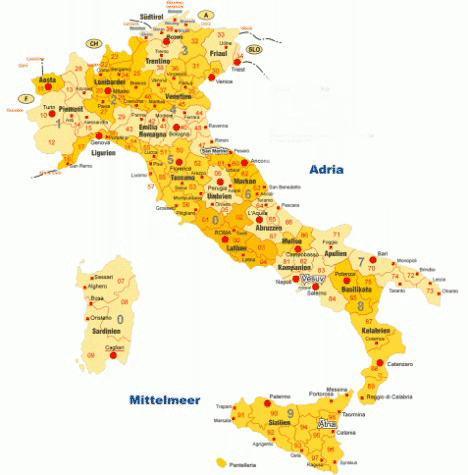
|
| There are about 40 wine regions spread all over Italy. From South Tyrol to Sicily. |
Where should I start my "voyage of discovery", where will it probably end? In the Chianti region, that's where I was socialised in terms of wine. Not with the "Supertoscans", they didn't exist for a long time. I only encountered them much later, when the myth of wine became a concept for me and the prices frightened me. So-called "table wines" with fantasy names and prices: Tignanello, Solaia, Sassicaia, Solengo, Ornellaia, Masseto and what they are all called. No, it was the bulbous bottles braided with straw that shaped my wine culture. Italy - unlike France - did not have an international wine culture for a very long time. Wine simply belonged to the Italian attitude to life, which was always referred to as "wine, women and song". I encountered this attitude to life early on, as the Italians were our first guest workers in Switzerland, so to speak.
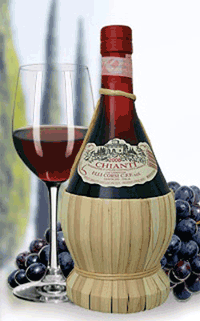
|
| Chianti% used to be synonymous with Italian wine and was traditionally sold in straw-wrapped bottles (fiasco). |
But today these are nothing more than nostalgic holiday memories from the 50s to the 70s: "Yes, yes, the Chianti wine, it invites us all! Therefore, let's be happy!" When I recently organised a tasting for a friend's 60th birthday, I, at his wife's request, smuggled a Chianti in the classic straw bottle among the top shots as a pirate - and it was recognised by only a few, although many of the birthday guests came to the wine with this very wine. Tempi passati! Today, the classic area of the Sangiovese grape - Tuscany - presents itself quite differently: more self-confident, more distinguished, definitely playing in the league of the best European wines. Under the title "I Tre Maestri Toscani", three wine greats from Tuscany joined forces to present the wines of 117 winemakers in Zurich. I had to go there, I wanted to know.
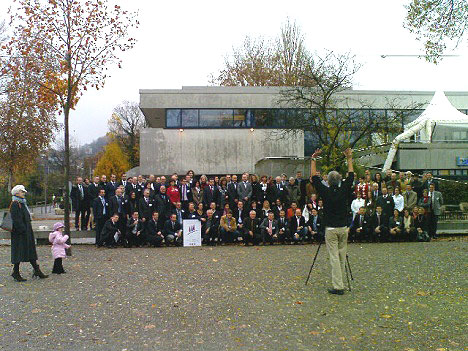
|
| Group photo with wife and toddler. More than 100 Italian winegrowers were present in Zurich in person. |
I admit, my approach was not easy at all. The area is already neatly delimited: Tuscany. And in Tuscany "only" the three consortia "Brunello di Montalcino", "Chianti Classico" and "Nobile di Montepulciano". While we were stuffed with information, statistics and "authentic statements", as is so common at such mammoth events, I stuck my nose deep into the glass and tried to smell and taste what was typical: Soil, location, grape varieties. The people in charge wanted to "make the wines tangible and prove the high quality". Did this also reach me? Yes, because the quality impressed me. No, because I could no longer find the described wine landscape because of all the bottles. Here a glass, there a sip, here a few words, there a clarification, in front a producer, next to him a merchant, wine pulled through the mouth, wine spat out, searched for the known, found the unknown.
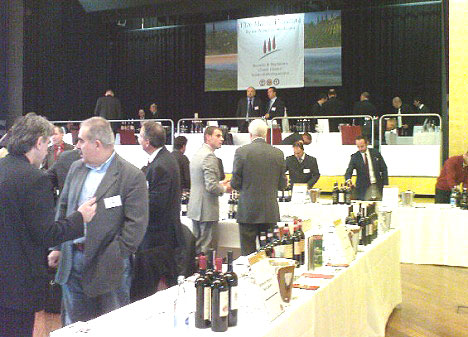
|
| One of the presentation rooms with tasting tables for 117 wineries. |
What impressed me most was the grape variety. What Cabernet Sauvignon - Merlot is for the Bordelais, Sangiovese embodies for Tuscany: Italy. I know that this is far too short-sighted, since in Italy the traditional native grape varieties are valued at a hundred and more. Sangiovese, however, is by far the most cultivated, on almost 90,000 hectares. Is it any wonder that Italy is often equated with this grape?
Don't get me started on the old Etruscans who brought Sangiovese ("blood of Jupiter") to Italy. The rough fellow has become quite noble, thanks to nobler clones, late and slow ripening, plant density, low yields, more refined vinification and terroir-appropriate vinification. But we know all that from many other wine regions.
But how does it taste, this "Italian wine", this Sangiovese?
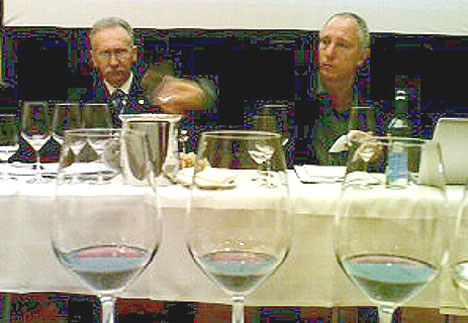
|
| Presentation of the traditional top wines from Tuscany |
As always in such difficult cases, the international wine language has to be used. First of all, there are the aromas: blackberry, redcurrant, violet, tobacco, minerality, cherries, cassis, a hint of fresh vanilla, dark forest berries. Then the characteristics: soft and harmonious, full-bodied, a fruit-driven play of aromas, slightly bitter, powerful, medium acidity. I desperately search for what makes the wine so typically Italian or even Tuscan. In vain - I feel it, it rises to my nose, it creeps along the palate. Wordlessly, but full of expression.
Annoyed, I give up, take a sip from the next producer, reach for similar descriptive words and am convinced that I have encountered a piece of Italy.
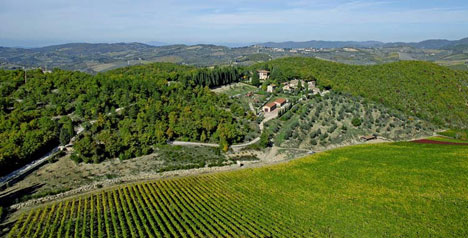
|
| Vines and olive groves characterise the landscape of Chianti Classico |
If you're disappointed that I can't describe what I'm experiencing better, look it up in a wine guide. It says something like: "Deep, smoky-roasty aroma of ripe, partly preserved, partly dried cherries with notes of mixed berries as well as tobacco and dry herbal aromas. Quite juicy in the mouth, melting, ripe fruit with toasty wood flavours, again also dry herbs and sweet tobacco notes....". Certainly more professional, more stylish than my amateurish attempts But more Italian, more Tuscan, more Sangiovese? I'll stick to my guns: Italy is not a stepchild in wine terms. But for me - in terms of precise knowledge and "pleasure training" - it is a problem child. But I have already initiated its adoption!
Sincerely
Yours/Yours